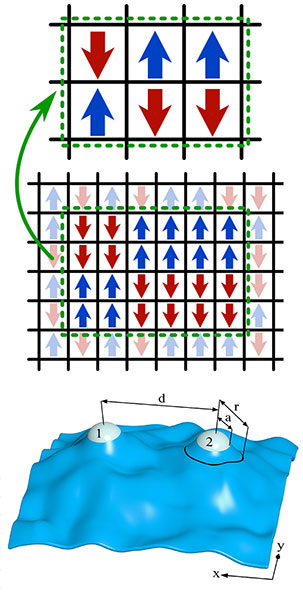Compulsory courses, M2 First semester, courses
Statistical field theory
While statistical mechanics deals with averages and fluctuations of global quantities, statistical field theory copes with their spatial fluctuations and correlations. By the so-called coarse-graining procedure, one can define for any quantity of interest a field, and, based on symmetry arguments, an effective Hamiltonian that describes its fluctuations. Advanced tools, such as functional integrals, Feynman diagrams, Wick theorem, and renormalization group (RG), are used to perform calculations. Statistical field theory is particularly adapted to study critical phase transitions, in which scale-free fluctuations are responsible for universal behaviours. The course introduces percolation as a geometrical example of critical phenomena, and develops detailed statistical field theoretical calculations for magnetic systems described by the O(n) and φ4 coarse-grained models, which are found in many other areas of condensed and soft matter physics.
Bibliography
- Lecture on Phase Transitions and the Renormalization Group, N. Goldenfeld, Frontiers in Physics.
- Statistical Physics of Fields, M. Kardar, Cambridge University Press.
- Principles of Condensed Matter Physics, P. Chaikin and T. C. Lubensky, Cambridge University Press.

Dominique Mouhanna
(Sorbonne Université)

Comments are closed





